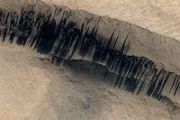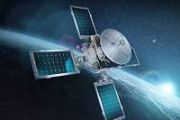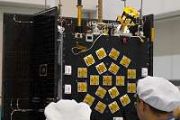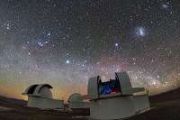
Copernical Team
Spanish rocket launch aborted due to last-minute glitch
 The maiden flight of Spain's first rocket was aborted Saturday after countdown ended because of a last-minute technical problem, the start up PLD Space said.
The launch of the Miura 1 in the southwestern provence of Huelva was "automatically aborted" as some of the umbilicals - which are used to provide power and fuel to rockets - did not release as it should, Raul Torres, a co-founder of
The maiden flight of Spain's first rocket was aborted Saturday after countdown ended because of a last-minute technical problem, the start up PLD Space said.
The launch of the Miura 1 in the southwestern provence of Huelva was "automatically aborted" as some of the umbilicals - which are used to provide power and fuel to rockets - did not release as it should, Raul Torres, a co-founder of New ways to space
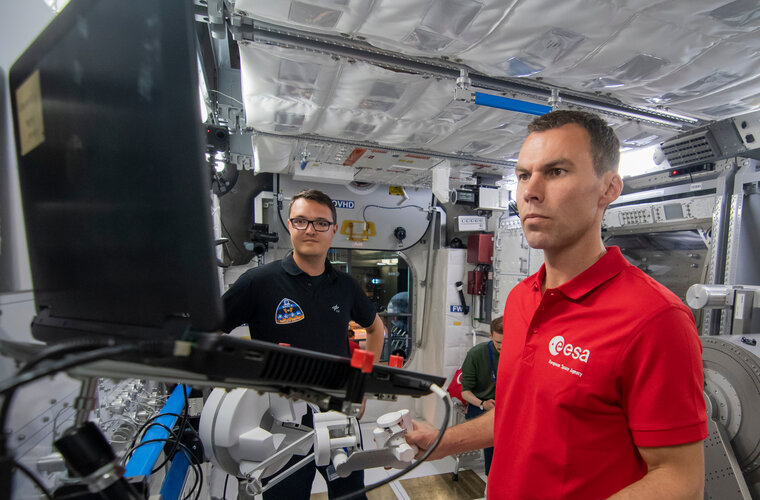 Image:
New ways to space
Image:
New ways to space Week in images: 12-16 June 2023

Week in images: 12-16 June 2023
Discover our week through the lens
Earth from Space: Eastern Mediterranean
 Image:
Copernicus Sentinel-3’s wide view captures the eastern edge of the Mediterranean and surrounding countries.
Image:
Copernicus Sentinel-3’s wide view captures the eastern edge of the Mediterranean and surrounding countries. China conducts extravehicular radiation biological exposure experiment on space station
 China has performed a radiation biological exposure experiment outside the country's Mengtian lab module for the first time, a milestone achievement in radiation biology and space science research, according to a report by Science and Technology Daily.
The experiment equipment was jointly developed by the National Space Science Center under the Chinese Academy of Sciences and the Dalian Ma
China has performed a radiation biological exposure experiment outside the country's Mengtian lab module for the first time, a milestone achievement in radiation biology and space science research, according to a report by Science and Technology Daily.
The experiment equipment was jointly developed by the National Space Science Center under the Chinese Academy of Sciences and the Dalian Ma Lunar Characterization Device Gets Early Funding
 An innovative flashlight to allow scientists to see the dark areas of the Moon to better understand their composition has been selected to participate in NASA's Innovative Advanced Concepts (NIAC) program.
The EmberCore Flashlight: Long Distance Lunar Characterization with Intense Passive X- and Gamma-ray Source Phase 1 project is a 9-month concept feasibility study that will evaluate sour
An innovative flashlight to allow scientists to see the dark areas of the Moon to better understand their composition has been selected to participate in NASA's Innovative Advanced Concepts (NIAC) program.
The EmberCore Flashlight: Long Distance Lunar Characterization with Intense Passive X- and Gamma-ray Source Phase 1 project is a 9-month concept feasibility study that will evaluate sour Navigating underground with cosmic-ray muons
 Superfast, subatomic-sized particles called muons have been used to wirelessly navigate underground in a reportedly world first. By using muon-detecting ground stations synchronized with an underground muon-detecting receiver, researchers at the University of Tokyo were able to calculate the receiver's position in the basement of a six-story building. As GPS cannot penetrate rock or water, this
Superfast, subatomic-sized particles called muons have been used to wirelessly navigate underground in a reportedly world first. By using muon-detecting ground stations synchronized with an underground muon-detecting receiver, researchers at the University of Tokyo were able to calculate the receiver's position in the basement of a six-story building. As GPS cannot penetrate rock or water, this Record-setting launch sends 41 satellites to space
 China launched a Long March 2D carrier rocket on Thursday afternoon to send a total of 41 satellites into space, setting a new national record for the most spacecraft transported on a single mission.
The rocket blasted off at 1:30 pm from a service tower at the Taiyuan Satellite Launch Center in Shanxi province. After a short flight, the second stage of the rocket successfully placed the 4
China launched a Long March 2D carrier rocket on Thursday afternoon to send a total of 41 satellites into space, setting a new national record for the most spacecraft transported on a single mission.
The rocket blasted off at 1:30 pm from a service tower at the Taiyuan Satellite Launch Center in Shanxi province. After a short flight, the second stage of the rocket successfully placed the 4 NASA Offers Fly-Fix-Fly Testing for SmallSat Planetary Observation
 After a 12-day stratospheric flight, winners of NASA's first TechLeap Prize are now analyzing data from technologies that may improve autonomous observation capabilities for small spacecraft flying over Earth, the Moon, or other worlds. Their payloads were selected through the TechLeap Autonomous Observation Challenge No. 1, which asked teams to develop technologies to autonomously detect, locat
After a 12-day stratospheric flight, winners of NASA's first TechLeap Prize are now analyzing data from technologies that may improve autonomous observation capabilities for small spacecraft flying over Earth, the Moon, or other worlds. Their payloads were selected through the TechLeap Autonomous Observation Challenge No. 1, which asked teams to develop technologies to autonomously detect, locat Scientists report 'benchmarks' for extreme space weather
 High-energy 'relativistic' electrons - so-called "killer" electrons - are a major source of radiation damage to satellites and so understanding their patterns of activity is crucial. Bursts of charged particles and magnetic fields from the Sun can tear open the Earth's magnetic field, giving rise to geomagnetic storms. During these events the number of killer electrons in the outer radiation bel
High-energy 'relativistic' electrons - so-called "killer" electrons - are a major source of radiation damage to satellites and so understanding their patterns of activity is crucial. Bursts of charged particles and magnetic fields from the Sun can tear open the Earth's magnetic field, giving rise to geomagnetic storms. During these events the number of killer electrons in the outer radiation bel 














